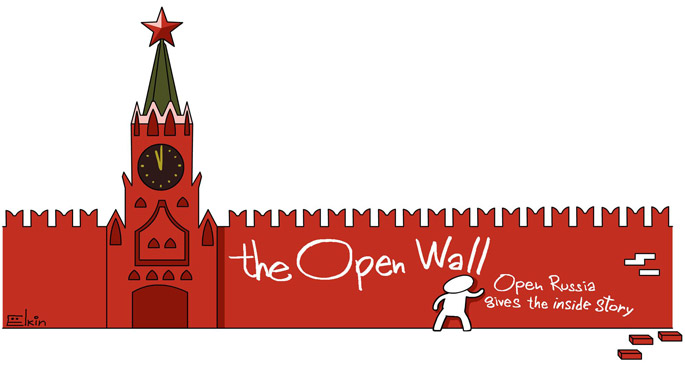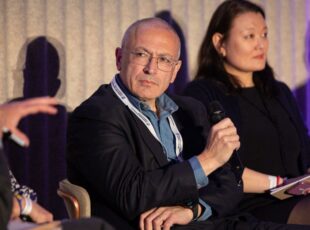The Russian Orthodox Church worships Putin-style capitalism
The Russian Orthodox Church worships Putin-style capitalism
From time to time, attempts are made by Russian media outlets to investigate the financial and economic activities of the Russian Orthodox Church (ROC). But it is not easy to penetrate the murkiness.

RBC, the business daily, published a report in February saying that “the Church’s outgoings are impossible to calculate: the ROC does not issue tenders and does not feature on the public procurement website.” Even that was enough to incur the wrath of the patriarchate. Vladimir Legoida, the Church’s media spokesman, rebuked RBC journalists for their professional interest in the issue of church expenditure: there is no need to disclose the ROC’s expenses, he says, because it is crystal-clear that the Church spends its money on whatever the Church requires. Apparently that includes expensive wristwatches, speedboats and palaces.
The question of the ROC’s income is no less contentious. According to RBC, in 2012-2015, the Russian Orthodox Church and associated bodies received a minimum of 14 billion roubles from the budget and from public organisations. But there’s no transparency to speak of here either.
The ROC receives a share of its income from commercial enterprises. Its coffers are kept well filled by Sofrino, a producer of various church items (as was confirmed by several priests in conversations with RBC, dioceses are strongly encouraged to buy their furniture from Sofrino), and by the Danilovskaya Hotel in Moscow. The ROC’s business interests also encompass prescription drugs, jewellery, agriculture, and the ritual services market. Many dioceses are also involved in rather more exotic business ventures: the Vologda diocese, for instance, owns a factory manufacturing reinforced concrete items, while the Kemerovo diocese is the outright owner of the Kuzbass Investment and Construction Company.
Archpriest Vsevolod Chaplin estimates that contributions from the dioceses now account for between a third, and half of the church’s total budget. The flow of money is generally in one direction: 34,500 parishes contribute a proportion of their income (10%-50%) to 293 dioceses, and these, in turn, contribute 15% of funds received, to the patriarchate. How the church makes its money in this case is clear to see: from donations for baptisms, weddings, memorials, etc. Candles, used in all services, constitute an important source of revenue. And all of these income streams are tax-free.
Newsweek magazine described in 2007 what non-transparency looks like at the parish level: “Only God knows how much the priests keep for themselves. Of course, no one wants to make contributions [to the diocese], which is why in a town of 30,000 people you can find churches that officially host only five funeral services and two weddings a year. But pop down to the church on any given Sunday and you’ll see two or three wedding corteges by the gates.”
The RBC investigation ascertained that the unsupervised handling of money continues higher up at the diocesan level. A cleric from a church in southern Russia reveals that: “Every diocesan meeting begins with the parishes being told that if they don’t get the requisite amount of money together, the parish priest will be replaced. Nobody cares if priests are performing their pastoral duties or not – the question of whether they’ll be able to raise the funds is far more important. We amass up to 8 million roubles a year in donations, and pay 30% to the diocese, but every time the metropolitan comes to visit, yet more money gets stuffed into an envelope.”
Large dioceses – of which there are around thirty – each contribute 10-20 million roubles a year, says Vsevolod Chaplin.
All of this money is then transferred by the dioceses to the patriarchate, but what happens to it after that is impossible to say. “It’s up to the church itself how to make use of it [its budget],” said the Reverend Alexander Volkov, press secretary of the Patriarch.

RBC concluded that, “there are ‘classified items’ in the [ROC] federal budget as well.” Which is a polite way of saying that nobody is saying where the money is being spent.
Inevitably, there are financial scandals. In 2011, Archpriest Mikhail Grigoryev of Kazan was revealed to own two Mercedes and a BMW X6, while his property portfolio was no less impressive: three country houses and three apartments, including one in Moscow.
Of course, that is nothing compared to the playboy extravagances of Patriarch Kirill, revealed by Open Russia not so long ago.
But is anybody surprised? The Russian constitution provides for a separation of church and state, but the reality is that church and state are inextricably intertwined. The ROC is in the business of selling indulgences, as it were, and in return allows itself to be used by the regime as an inexhaustible fount of conservative views.
They need each other, but that is not what Russia needs. The hope here isn’t so much that the ROC will finally hire international auditors and begin to run its affairs in an open and transparent manner (though that, of course, wouldn’t hurt either); the real hope is that it will set about advancing the values of charity, tolerance and sympathy.




